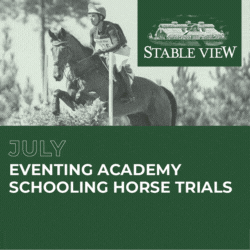We are delighted to host Sally Cousins as she shares her wealth of knowledge with us in the form of weekly training tips. We hope these nuggets of information can be integrated directly into your program at home and can influence the way you ride and train your horses. Be sure to check out both the Sally Cousins Eventing website and keep up with her on Facebook.
It can take a long time to figure out the training program, the proper equipment and the right barn management to make a successful partnership with a horse. Once I have found a successful formula, I try not to change it. All my tack is marked so it is on the exact holes on the nosebands or links on the curb chains.
We feed the same type hay and grain year round and get it from the same suppliers. I am very careful about the turnout and will not move any horses into new fields before a big event. I also work with the same vet and farrier to have consistency in the care, and I ride with the same trainers so that I can have some continuity in my lessons.
I only make changes when the horse is starting to train poorly. I will think about what they are eating. I work with the vet and farrier to make sure they are not sore somewhere. I will also think about the equipment: Is the bit to strong or not enough? Would a different noseband work better? Have they changed shape and need an adjustment to the saddle? Am I asking too much of them in their work?
Sometimes I hear riders say, “My horse has been going so well; I don’t think I need this bit any longer,” or “My horse was really good at his last event; I think I’ll skip jumping him this week.” If your horse is going well, stick with the program that is producing the good results! I understand that things happen, horses go lame, we have to travel for work or life gets in the way, but keeping the variables to a minimum makes the art of training horses easier.




















